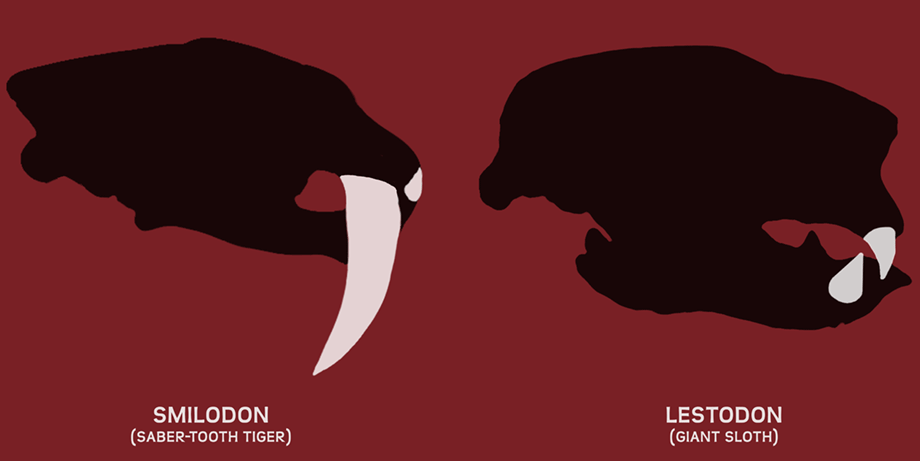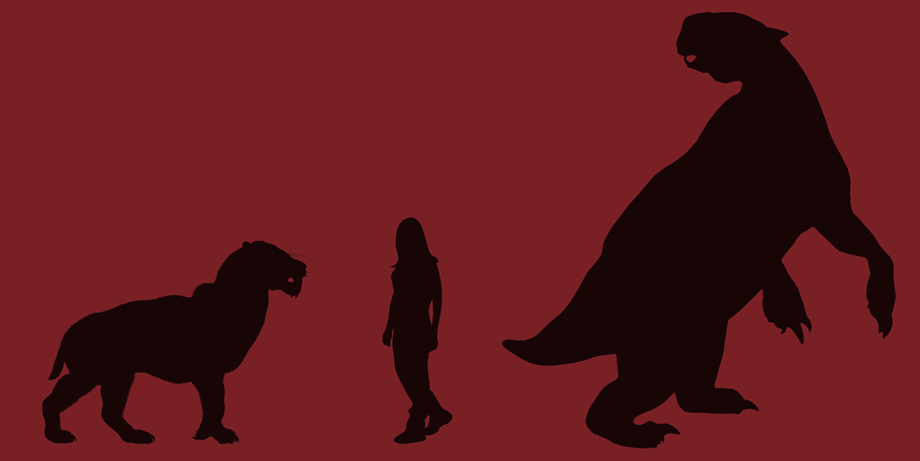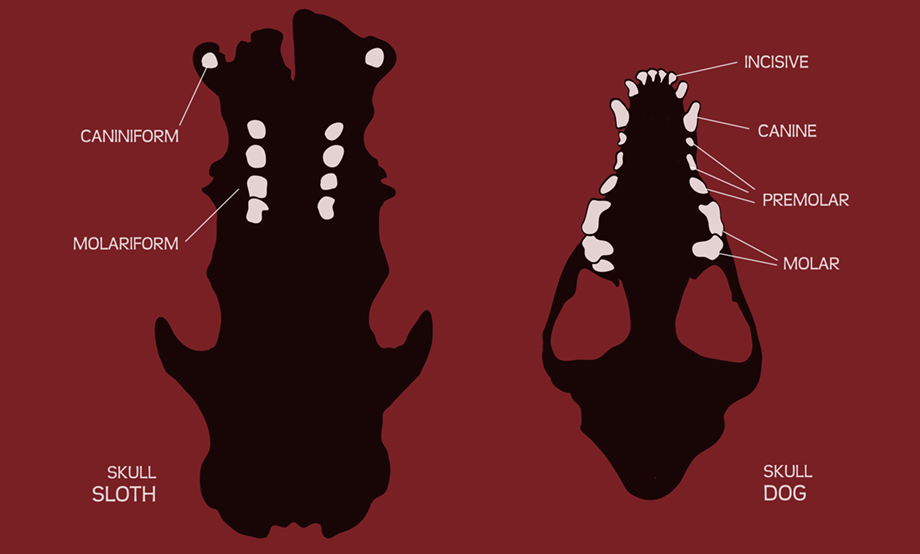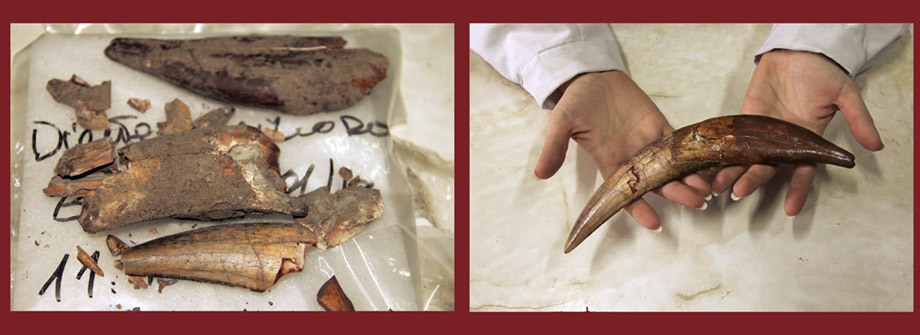Battle of the fangs
Smilodon vs. Lestodon













0.0 mm
| Plane | Position | Flip |
| Show planes | Show edges |

 Initial view
Initial view
 Zoom In
Zoom In
 Zoom Out
Zoom Out
 Enable light control
Enable light control
 Enable Measure tool
Enable Measure tool
 Enable plane sections
Enable plane sections
 Full screen
Full screen
Drag: Rotate model
Drag + CTRL: Pan model
 Lestodon
Lestodon Smilodon
SmilodonClick the buttons above to turn on or off the 3D models in the viewer

The one on top goes before the one on the bottom. Or is it the other way around?
Some sloths have caniniform teeth that look similar to canines from other mammals such as wolves, tigers, lions, gorillas, etc. These teeth grow continuously throughout their lives and for this reason, the upper and lower caniniforms are constantly getting sharpened one against the other. Another difference with canines is their positioning. Upper caniniforms lie in front of lower ones when the animal closes its mouth, while in the rest of the mammals, it is the opposite, with the upper canine lying behind the lower one.

Sizes
The Smilodon, or saber-toothed tiger was the fiercest predator in all the megafauna. Its fangs measured over 15cm and along with their claws and powerful forelimbs, they were its most efficient hunting weapons. The South American species, Smilodon populator, probably weighed around 400Kg – almost double the weight of an adult male lion. Lestodon was the second largest sloth after Megatherium and could weigh around four tons. Some specimens, maybe the males, had large teeth similar to fangs, called caniniforms. Lestodon is the most commonly found sloth in Uruguay.

Sloth dentition
The teeth of the xenarthrans, including sloths, differ from those of other mammals in that they lack the external enamel layer. In addition, their dental formula varies greatly, making it difficult to compare their teeth to the incisors, canines, premolars and molars from other mammals. For this reason, the teeth of xenarthrans are commonly called molariforms due to their similarity to molars, and in some special cases they are called caniniforms or incisiforms because they resemble canines or incisors, respectively.
Carnivores vs Herbivores
The fangs of the saber-toothed tiger show features closely associated with a carnivore diet that cannot be observed in the caniniforms belonging to Lestodon. For example, if you look at the 3D model, you will see that the cutting edge of the fang is serrated like in a knife and that it is flattened. These characteristics make these teech excellent as hunting tools.

Smilodon was not the only one with saber-teeth
Even though Smilodon is the most widely known, it is not the only mammal to have had “saber-teeth”. Other felids from the subfamily Machairodontinae – closely related to Smilodon – also had those teeth. Moreover, other extinct organisms not so closely related to Smilodon, like barbourofelids and nimravids, and even marsupials like Thylacosmilus, had enlarged fangs. In all these cases, the large fangs evolved independently in a process called evolutionary convergence and they are related to large prey sizes.

Fossil teeth
Teeth are the strongest structures in the whole skeleton of a vertebrate animal and very often, they are the most abundant in the fossil record. In any case, this does not make them less fragile than any other fossils. For example, the Smilodon fang from Arroyo del Vizcaíno broke in several pieces after losing the moisture with which it was collected and therefore required an extensive preparation work to be restored.





